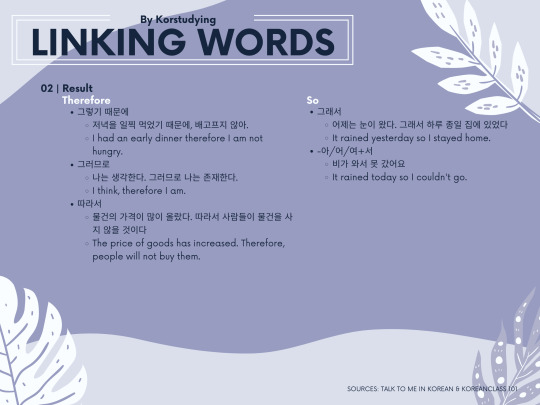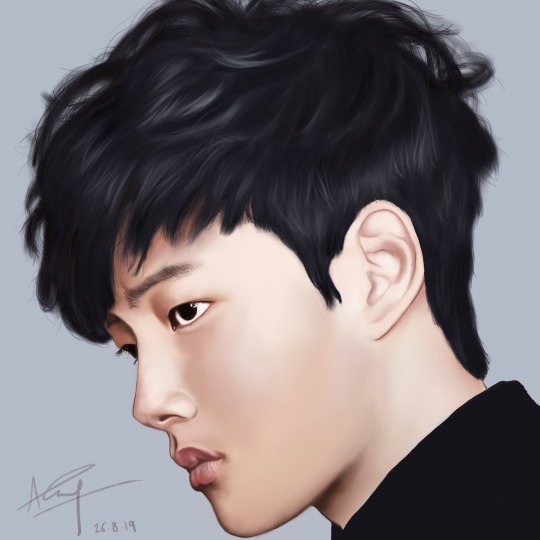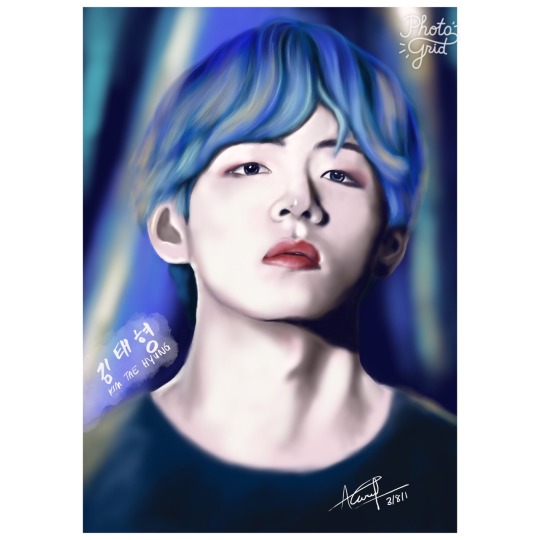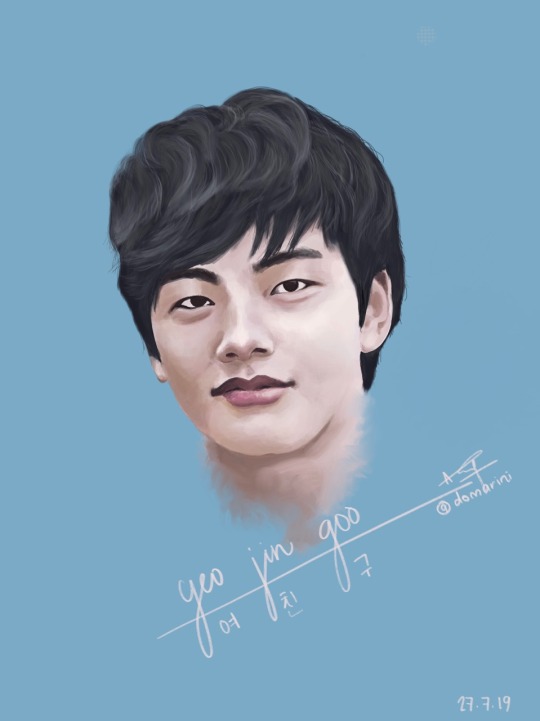Photo



Linking words🔮
It’s one thing to know how to make a sentence, it’s another thing to connect sentences to each other to be able to make a comprehensive story. Here are some of the Korean linking words to do so!💫
311 notes
·
View notes
Text

Medium-procreate ipad pro, 20 hours Yeo Jin Goo
#procreatedrawing#procreate art#digital drawing#digital portrait#devian art#potrait#digital painting#yeojingoo
0 notes
Text

Jungkook BTS on procreate
#procreatedrawing
#digital drawing#procreate art#digital portrait#procreatedrawing#jungkook#btsart#bts world#bts#jungkookbts
0 notes
Text

Procreate 12 hours
Brushes- airbrushes
Subject: kim taehyung BTS
#bts world#btstaehyung#bts#taehyung#btsart#digital drawing#digital portrait#digital media#procreate art#procreatedrawing#kim taehyung
0 notes
Text
Masterlist
안녕, 여러분! Hi, everyone! This is my masterlist of all my Korean lessons so you can easily find the lessons you need! As always, feel free to message me with any messages you may have about any of these lessons!! Happy studying!
Hangul Lessons
Consonants
Vowels
Writing/Reading Korean Syllables
The Basics
Common Phrases
Numbers
Sentence Structure and Particles
Present-Tense Conjugations and Formal Language
Adjectives
Questions
Honorifics and Casual Language
Level 1
Negative Sentences
잘 and 못
Past Tense
Future Tense (-ㄹ / 을 것이다)
-ㄹ / 을 까요? (Shall we…? / I wonder…?)
-(으)세요 (Giving Commands / Asking Questions)
Level 2
-고 싶다 (I want to…)
How to Say “And”
-지만 (However)
아/어/여서 (So…)
Level 3
-(으)면 (If…)
아/어/여도 (Even though…/Even if…)
(으)면 되다 / 아/어/여도 되다 (I can…/You may…)
Vocabulary
Must-Know People
Must-Know Places
Must-Know Things
Must-Know Verbs
Must-Know Adjectives
Countries
Months, Days of the Week, and More
Clothing (옷)
School (학교)
Autumn (가을)
K-Pop Breakdowns
TXT - “Cat & Dog”
4K notes
·
View notes
Text
The Basics #3: Sentence Structure and Particles
안녕, 여러분! Hey, everyone! Welcome back to my blog! In this lesson, I want to teach you the basic sentence structure of Korean. Let’s start by examining the sentence structure of English, first!
In English, we use the SVO (subject-verb-object) order to form basic sentences. For example:
I like cats Subject = I Verb = like Object = cats
In Korean, however, we use the SOV (subject-object-verb) order to do this. Thus, instead of “I like cats,” we would literally say “I cats like.” The Korean translation for the sentence above, for example, would be:
저는 고양이들을 좋아해요 Subject = 저는 (I) Object = 고양이들을 (cats) Verb = 좋아해요 (like)
To a native English speaker, this looks very odd at first. But don’t worry! After some practice, you’ll have no problem with this!
Now, let’s talk about the real confusing part: particles. In English, we don’t exactly have particles to indicate which word is the subject or object. Korean, however, does. They can often be dropped in normal conversation, but using them creates less ambiguity and makes your sentences clearer. Let’s begin with topic particles.
Topic Particles: 은/는
As their title suggests, topic particles show what the topic of the sentence is. In the sentence, 저는 고양이들을 좋아해요, 저는 is the topic. 저, I, is the one doing the action, which is liking something else.
Let’s look at another example: 제 이름은 미셸입니다. (My name is Michele)
Here, the word for “name,” 이름, has a topic particle attached. We are talking about my name, therefore it’s the main focus of the sentence.
*note: 는 is attacked to nouns ending in a vowel (ex. 저는), while 은 is attached to those ending with consonants (ex. 이름은). This is just for the sake of easier pronunciation!
Subject Particles: 이/가
Now let’s move on to the subject particles. Let’s read this example:
오늘은 날씨가 좋아요. (The weather is good today)
오늘 = today
날씨 = weather
좋아요 = is/are/am good
*Note: 이 is attached to nouns ending in a consonant (ex. 집이), while 가 is attached to nouns ending with a vowel (ex. 날씨가).
We have both a topic particle and a subject particle. Here, the topic is 오늘. We are talking about today, so that’s the main topic of the sentence. You may also think of this sentence like this: As for today, the weather is good. This sets up “today” as the main topic.
But what about 날씨? That’s also what the sentence is about: the weather. So why does it have a subject particle instead?
This concept can be confusing for even advanced learners (and me too lol). The truth is that they are essentially the same thing. There is, however, a difference in some situations. Let’s use the same example.
오늘은 날씨가 좋아요.
This could simply mean “the weather is good today,” but may have a different nuance depending on the context. 오늘 has the topic particle attached, meaning that a comparison between “today” and another day could be a part of the conversation. For example:
어제 비가 왔어요. 오늘은 날씨가 좋아요.
It rained yesterday. Today, the weather is good.
어제 = yesterday
비 = rain
왔어요 = came (literally means rain came yesterday)
Because 오늘 has 은 attached, there is an emphasis on “today” (in this particular case). We are pointing out a distinction between the events of yesterday and today, hence why 오늘 should be emphasized–it rained yesterday, but as for today, it is very nice outside. Shall we try another example?
제가 집에 안 갔어요. 민지는 집에 갔어요.
I did not go home. Minji went home
제가 = another way of saying I/me (as the subject of sentence) (formal)
집 = home/house
에 = location particle
안 = not
갔어요 = went (past-tense of “to go”)
* When talking about locations, the location you are indicating would usually go after the subject/topic, as seen here. Sentences must always end in a verb, unlike English!
In the second sentence, 민지 has 는 attached. In this context, you are trying to make a comparison between what the two of you did. You didn’t go home, but Minji did. Perhaps someone thought you left their party before it was over, but in reality, Minji is the one who left early. Hope that makes more sense! Still have the energy to learn about object particles?
Object Particles: 을/를
Let’s look at our first example again: 저는 고양이들을 좋아해요
Here, 고양이들 (cats), is the object. This means that I, 저는, am the one doing the action onto the cats. Let’s try another one:
저는 책을 읽어요. I read a book.
책 = book
읽어요 = read
Like the previous example, I am the subject acting on the book–I am reading it. Thus, the word for book gets the object particle as it is being acted upon in some way.
That’s about it for the subject, topic, and object particles. Let’s discuss location ones now. These are a little simpler and even mirror what we use in English, so don’t fear!
Location Particles: 에/에서
에 can be used to mark a time or place. In the example above, for instance, you can say 민지는 집에 갔어요 to mean Minji went home. Although we don’t have a particle in the English translation, 에 basically means “to.” In other words, this sentence may be translated as “Minji went to the house.” When you want to indicate that you are going to somewhere, you can attach 에 to that location. Here’s another example:
학교에 왔어요 = I/you/he/she/they came to school.
* In Korean, the subject/topic of the sentence can sometimes be dropped depending on the context. Sometimes, it it understood what/who you are talking about, so the subject/topic doesn’t always need to be indicated.
In this sentence, 에 is used since you came to school. It suggests some sort of change in location–you were in one place first, but you got up and went somewhere else.
에 can also be used when talking about time. For example:
7시에 일어났어요 = I got up at 7 o’clock
시 = word for “o’clock”
일어났어요 = got up
에서 is a little different. The closest English translation is “at.” Unlike 에, 에서 indicates an action that is being done while at that location. For instance:
학교에서 공부해요 = I study at school
공부해요 = study
Like in English, you wouldn’t say “I study to school,” because “study” isn’t a word of motion like the words “go,” “come,” “arrive,” “fly,” “drive,” etc. When using those motion verbs in Korean, you should use 에 since you are moving to another location. 에서, however, simply shows that you are doing an action at a location. This concept isn’t too different from what we use in English, so I hope it makes sense!
에서 can also mean “from” when discussing locations. Like we saw in an earlier lesson, you can say 저는 미국에서 왔어요 to literally mean “I came from America.” In this case, 에서 means “from.”
There are a lot of other particles in Korean that I might make a future lesson about, but I think this is enough for now lol. These are the ones you should know for basic Korean, so just focus on these for now! I hope this was helpful!! As always, feel free to ask me any questions you might have!! 안녕!
1K notes
·
View notes
Note
Hi, i wondering what is different between 나 and 내? Thank uu
Hi! Essentially, the difference between the two is that 나 is an informal way of saying “I” or “me,” while 내 is an informal way of saying “my.” For example:
나는 미셸이야 = I am Michele (informal)
내 이름은 미셸이야 = My name is Michele (informal)
Noticed how I attached 는, a topic particle, to 나. If you wanted to attach a subject particle, 가, to it, it would become 내가 (which also means “I”). I’m not sure why it changes to 내가 and not “나가” (you can’t say this to mean “I”), but I hope this all makes sense anyway! If you want more info on particles, I have a lesson on them here!
If you wanted to say “me,” you can attach the object particle 를 to 나 to become 나를. For example:
나를 알아? = Do you know me? (informal)
I hope this helped!! 화이팅!
49 notes
·
View notes
Text

Procreate 4 hours
Korean actor- Yeo Jin Goo
#devianart #procreateart # digitalart #illustration #procreatebrushes #yeojingoo #kpopart #art #drawing #potrait drawing
For more- visit my ig page dongsaengdraw

0 notes
Text

Procreate drawing
#yeojingoo #procreatedrawing #devianart #procreate #digitalart
0 notes
Text

#kimtaehyungBTS #BTS #kimtaehyung #procreatedrawing #devianart #kpopartist #kpop
12 hours on procreate.
Medium: procreate brushes
Model: kim taehyung BTS
#btsart#bts#btstaehyung#bts world#kim taehyung#procreate art#procreatedrawing#digital drawing#digital portrait
0 notes
Text
How many of you are interested in learning Bahasa Melayu? If i got like 10 likes, i will open a free teaching on Bahasa Malayu... å...å
0 notes
Text
Vocabulary 감정
감정 - emotions
걱정 - anxiety, worry
그립다 - to be missed, to be longed for
기분 - feeling
기쁘다 - to be glad, to be happy
깜짝 - surprisingly, all of sudden
놀라다 - to be surprised, to be amazed
느끼다 - to feel
답답하다 - to be stuffy, to feel helpless
무섭다 - to be scary
부럽다 - to be envious
불안 - uneasiness, restlessness
사랑 - love
상쾌하다 - to be refreshing
섭섭하다 - to be sad, to be regretful
슬프다 - to be sad
신나다 - to be excited
심심하다 - to be bored (because of having too much time)
외롭다 - to be lonely
우울하다 - to be depressed
울다 - to cry
웃다 - to smile, to laugh
즐겁다 - to be enjoyable, to be cheerful
지루하다 - to be bored
창피하다 - to be embarrassed, to be ashamed
편안하다 - to be free from anxiety, to be at ease
행복 - happiness
화 - anger
1K notes
·
View notes
Text

12 hours on procreate. #procreatedrawing
Model- Yeo Jin Goo- korean actor
#procreatedrawing#procreate art#yeojingoo#digital media#digital portrait#digital drawing#digital painting
0 notes
Text

13 hours on Procreate.
Medium- procreate
Type of brushes- painting brushes
Model: Yeo Jin Goo- actor
#yeojingoo#procreatedrawing#procreate art#korean actor#korean#digital media#digital portrait#digital drawing
0 notes
Text

제 이름은 킇들 입니다, 만나서 반갑습니다 ^-^
Procreate
Painting brushes
Model- my own nephew Khidir ^_^
1 note
·
View note
